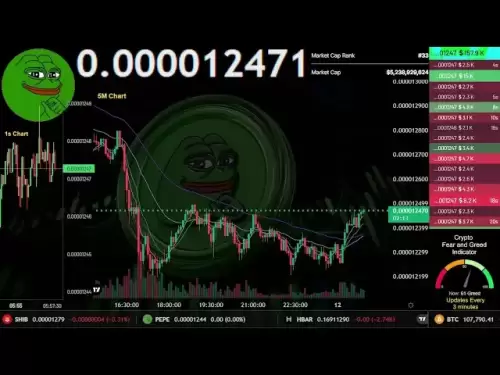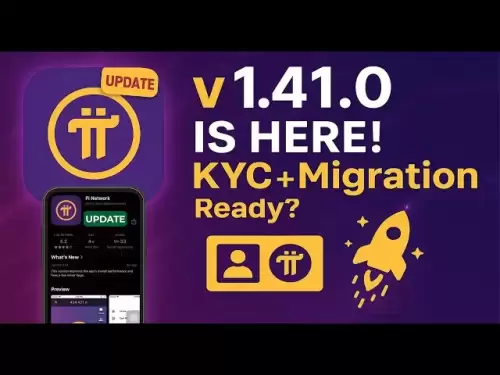-
 Bitcoin
Bitcoin $107,631.9817
-1.73% -
 Ethereum
Ethereum $2,739.1787
-4.61% -
 Tether USDt
Tether USDt $1.0000
-0.01% -
 XRP
XRP $2.2427
-3.30% -
 BNB
BNB $664.0527
-0.73% -
 Solana
Solana $158.0902
-5.38% -
 USDC
USDC $0.9998
-0.01% -
 Dogecoin
Dogecoin $0.1876
-7.78% -
 TRON
TRON $0.2753
-3.21% -
 Cardano
Cardano $0.6820
-5.55% -
 Hyperliquid
Hyperliquid $43.0171
-0.38% -
 Sui
Sui $3.3308
-4.87% -
 Chainlink
Chainlink $14.3431
-7.89% -
 Avalanche
Avalanche $21.0266
-6.48% -
 Bitcoin Cash
Bitcoin Cash $437.7657
-1.56% -
 Stellar
Stellar $0.2746
-2.52% -
 UNUS SED LEO
UNUS SED LEO $8.8665
-1.96% -
 Toncoin
Toncoin $3.1885
-3.37% -
 Shiba Inu
Shiba Inu $0.0...01260
-6.84% -
 Hedera
Hedera $0.1686
-4.93% -
 Litecoin
Litecoin $88.8406
-5.16% -
 Polkadot
Polkadot $4.0542
-6.28% -
 Monero
Monero $322.5806
-4.20% -
 Ethena USDe
Ethena USDe $1.0004
-0.02% -
 Bitget Token
Bitget Token $4.7089
-3.10% -
 Dai
Dai $0.9998
-0.01% -
 Pepe
Pepe $0.0...01206
-9.06% -
 Uniswap
Uniswap $7.8694
-5.20% -
 Pi
Pi $0.6232
-2.68% -
 Aave
Aave $301.3815
-3.83%
How to set the cost moving average? How many days of average price are used for short-term?
The cost moving average helps investors track their average cost per crypto unit, aiding in strategic buying or selling decisions based on market trends.
Jun 09, 2025 at 12:15 am
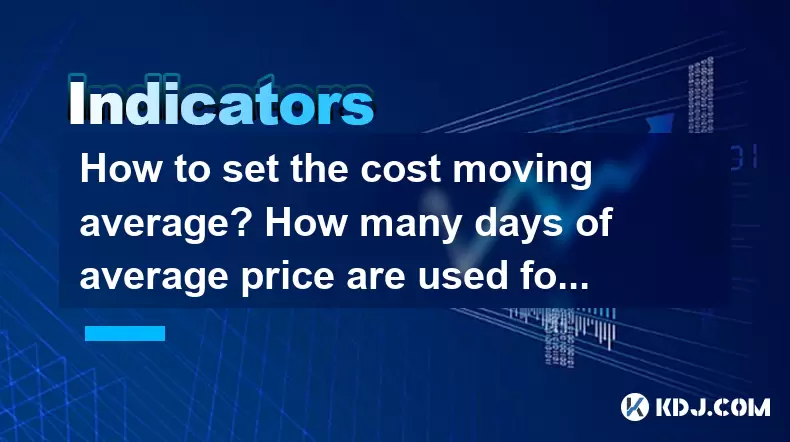
Understanding and setting a cost moving average is a crucial aspect of managing your cryptocurrency investments. The cost moving average, often referred to as the average cost basis, helps investors understand the average price they have paid for their holdings over a period. This metric is particularly useful for making informed decisions about buying or selling assets. In this article, we will delve into how to set the cost moving average and discuss how many days of average price are typically used for short-term analysis.
What is Cost Moving Average?
The cost moving average is calculated by dividing the total amount spent on a cryptocurrency by the total number of units purchased. This gives investors a clear picture of their average cost per unit, which is essential for tracking performance and making strategic decisions. For example, if you bought 1 Bitcoin at $30,000 and another at $40,000, your cost moving average would be ($30,000 + $40,000) / 2 = $35,000 per Bitcoin.
Setting the Cost Moving Average
To set the cost moving average, you need to keep a detailed record of all your transactions. Here is a step-by-step guide on how to do it:
- Record each transaction: Every time you buy or sell a cryptocurrency, note down the date, the amount of cryptocurrency, and the price per unit.
- Calculate the total cost: Sum up the total amount of money spent on buying the cryptocurrency.
- Calculate the total units: Sum up the total number of units of the cryptocurrency purchased.
- Divide the total cost by the total units: This will give you the cost moving average.
For instance, if you have made multiple purchases of Bitcoin at different times, you would follow these steps:
- Transaction 1: Bought 1 BTC at $30,000
- Transaction 2: Bought 1 BTC at $40,000
- Total Cost: $30,000 + $40,000 = $70,000
- Total Units: 1 + 1 = 2 BTC
- Cost Moving Average: $70,000 / 2 = $35,000 per BTC
Using Cost Moving Average for Decision Making
The cost moving average is a powerful tool for investors. By comparing the current market price to your cost moving average, you can determine if you are in a profit or loss position. If the current market price is above your cost moving average, you are in profit. Conversely, if it is below, you are in a loss.
For example, if the current market price of Bitcoin is $50,000 and your cost moving average is $35,000, you are in a profit of $15,000 per Bitcoin. This information can guide your decision on whether to hold, sell, or buy more.
Short-Term Average Price: How Many Days?
When it comes to short-term analysis, the number of days used for calculating the average price can vary based on the investor's strategy. Commonly, short-term average prices are calculated over periods ranging from 5 to 20 days. These periods are short enough to capture recent trends but long enough to smooth out daily volatility.
- 5-day average: Useful for very short-term traders who want to react quickly to market movements.
- 10-day average: A popular choice for traders looking for a balance between responsiveness and stability.
- 20-day average: Often used by investors who want to capture a bit more of the trend while still focusing on short-term movements.
Calculating Short-Term Average Price
To calculate the short-term average price, you need to gather the closing prices of the cryptocurrency over the chosen period and then find the average. Here’s how you can do it:
- Choose the period: Decide on the number of days you want to use for your average (e.g., 10 days).
- Gather the closing prices: Collect the closing prices of the cryptocurrency for each of the past 10 days.
- Sum the prices: Add up all the closing prices.
- Divide by the number of days: Divide the total sum by 10 to get the 10-day average price.
For example, if the closing prices of Bitcoin over the past 10 days were $45,000, $46,000, $47,000, $48,000, $49,000, $50,000, $51,000, $52,000, $53,000, and $54,000, the 10-day average price would be:
- Sum of prices: $45,000 + $46,000 + $47,000 + $48,000 + $49,000 + $50,000 + $51,000 + $52,000 + $53,000 + $54,000 = $495,000
- 10-day average price: $495,000 / 10 = $49,500
Using Short-Term Average Price
The short-term average price can be used to identify trends and make trading decisions. If the current price of a cryptocurrency is above its short-term average, it might indicate a bullish trend. Conversely, if it is below, it might suggest a bearish trend.
For instance, if the current price of Bitcoin is $55,000 and the 10-day average price is $49,500, this could signal a bullish trend, encouraging investors to consider buying or holding their positions.
Combining Cost Moving Average and Short-Term Average Price
By combining the cost moving average with the short-term average price, investors can gain a more comprehensive view of their investment performance and market trends. The cost moving average helps in understanding the overall cost of your holdings, while the short-term average price assists in making timely trading decisions based on recent market movements.
For example, if your cost moving average for Bitcoin is $35,000 and the current 10-day average price is $49,500, you can see that the market is currently trending above your cost basis, indicating potential profit opportunities.
Frequently Asked Questions
Q1: Can the cost moving average be used for all cryptocurrencies?
Yes, the cost moving average can be applied to any cryptocurrency. The principle remains the same regardless of the asset: it's the total amount spent divided by the total number of units purchased.
Q2: How often should I update my cost moving average?
It's advisable to update your cost moving average after every transaction. This ensures that your average cost basis remains accurate and reflects your latest investments.
Q3: Is the short-term average price more important than the cost moving average?
Both metrics are important but serve different purposes. The short-term average price helps in identifying current market trends, while the cost moving average is crucial for understanding your investment's performance over time. Depending on your trading strategy, you might prioritize one over the other.
Q4: Can I use different time frames for the short-term average price?
Yes, you can use different time frames based on your trading strategy. While 5 to 20 days are common for short-term analysis, you can choose any period that suits your needs, such as 3 days or 30 days, to capture different levels of market movement.
Disclaimer:info@kdj.com
The information provided is not trading advice. kdj.com does not assume any responsibility for any investments made based on the information provided in this article. Cryptocurrencies are highly volatile and it is highly recommended that you invest with caution after thorough research!
If you believe that the content used on this website infringes your copyright, please contact us immediately (info@kdj.com) and we will delete it promptly.
- Expert Predicts When Bitcoin (BTC) Price Could Hit a New All-Time High
- 2025-06-13 02:00:20
- US President Donald Trump Virtually Spoke at the Coinbase State of Crypto Summit
- 2025-06-13 02:00:20
- Arctic Pablo Coin (APC) Explodes Onto the Meme Coin Stage as One of the Top New Meme Coins for Exponential Returns
- 2025-06-13 01:55:12
- Litecoin (LTC) Price Nosedives as Bollinger Bands Signal Lingering Bearish Sentiment
- 2025-06-13 01:55:12
- DeFi Development Corp. (DFDV) Secures $5 Billion Equity Line of Credit from RK Capital Management
- 2025-06-13 01:50:12
- Tether Expands Gold Strategy with Stake in Elemental Altus Royalties
- 2025-06-13 01:50:12
Related knowledge
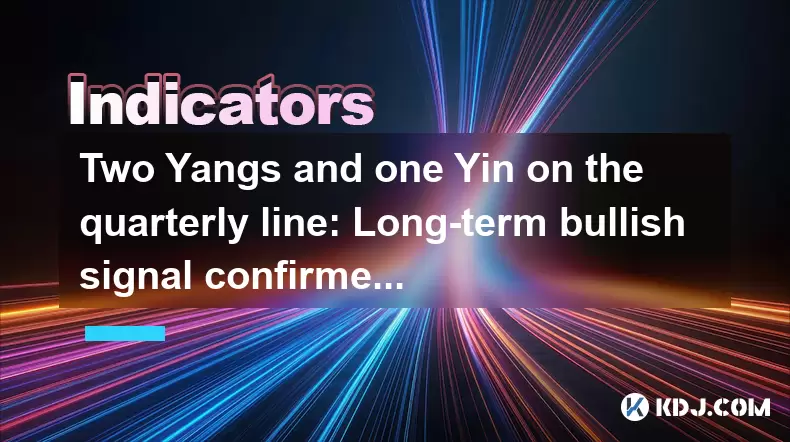
Two Yangs and one Yin on the quarterly line: Long-term bullish signal confirmed?
Jun 12,2025 at 07:00am
Understanding the 'Two Yangs and One Yin' Candlestick PatternIn technical analysis, candlestick patterns play a pivotal role in identifying potential market reversals or continuations. The 'Two Yangs and One Yin' pattern is one such formation that traders often observe on longer timeframes like the quarterly chart. This pattern consists of two bullish (...
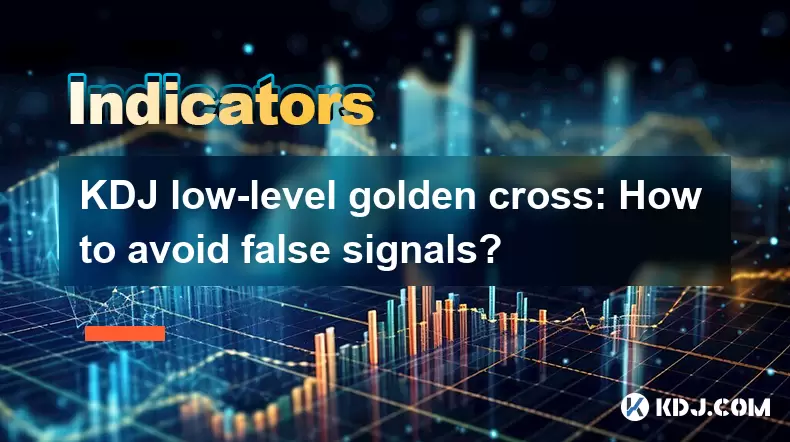
KDJ low-level golden cross: How to avoid false signals?
Jun 12,2025 at 08:21am
Understanding the KDJ IndicatorThe KDJ indicator, also known as the stochastic oscillator, is a momentum-based technical analysis tool widely used in cryptocurrency trading. It consists of three lines: the %K line (fast stochastic), the %D line (slow stochastic), and the %J line (divergence value). These lines oscillate between 0 and 100, helping trader...

Bottom-up volume stagnation: Is it accumulation or heavy selling pressure?
Jun 12,2025 at 01:42pm
What Is Bottom-Up Volume Stagnation?Bottom-up volume stagnation refers to a specific pattern observed in cryptocurrency trading charts where the price of an asset moves sideways or slightly downward, and trading volume remains consistently low over an extended period. This phenomenon is often seen after a sharp price drop or during a prolonged bear mark...
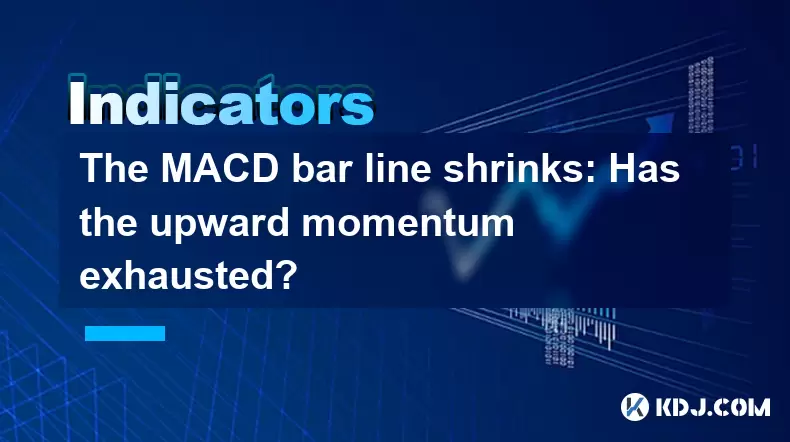
The MACD bar line shrinks: Has the upward momentum exhausted?
Jun 12,2025 at 12:49am
Understanding the MACD Bar LineThe Moving Average Convergence Divergence (MACD) is a widely used technical indicator in cryptocurrency trading. It consists of three main components: the MACD line, the signal line, and the MACD histogram (also known as the bar line). The MACD bar line represents the difference between the MACD line and the signal line. W...

The chip peak moves up: Is the main force quietly shipping?
Jun 12,2025 at 01:01am
Understanding the Chip Peak Movement in Cryptocurrency MiningIn recent years, the chip peak movement has become a critical topic within the cryptocurrency mining community. This phrase typically refers to the point at which mining hardware reaches its maximum efficiency and output capacity. When this peak shifts upward, it often signals changes in the s...
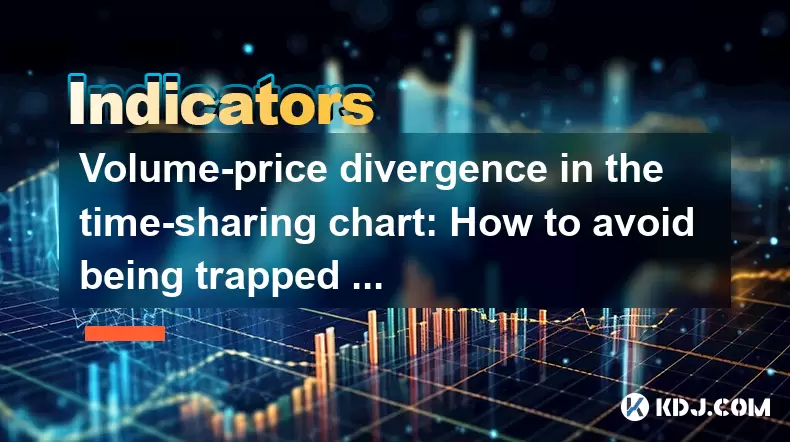
Volume-price divergence in the time-sharing chart: How to avoid being trapped on the same day?
Jun 12,2025 at 07:28pm
Understanding Volume-Price Divergence in Cryptocurrency TradingVolume-price divergence is a critical concept in technical analysis, especially within the fast-moving world of cryptocurrency trading. It refers to a situation where price movement and trading volume move in opposite directions. For instance, if the price of a cryptocurrency is rising while...

Two Yangs and one Yin on the quarterly line: Long-term bullish signal confirmed?
Jun 12,2025 at 07:00am
Understanding the 'Two Yangs and One Yin' Candlestick PatternIn technical analysis, candlestick patterns play a pivotal role in identifying potential market reversals or continuations. The 'Two Yangs and One Yin' pattern is one such formation that traders often observe on longer timeframes like the quarterly chart. This pattern consists of two bullish (...

KDJ low-level golden cross: How to avoid false signals?
Jun 12,2025 at 08:21am
Understanding the KDJ IndicatorThe KDJ indicator, also known as the stochastic oscillator, is a momentum-based technical analysis tool widely used in cryptocurrency trading. It consists of three lines: the %K line (fast stochastic), the %D line (slow stochastic), and the %J line (divergence value). These lines oscillate between 0 and 100, helping trader...

Bottom-up volume stagnation: Is it accumulation or heavy selling pressure?
Jun 12,2025 at 01:42pm
What Is Bottom-Up Volume Stagnation?Bottom-up volume stagnation refers to a specific pattern observed in cryptocurrency trading charts where the price of an asset moves sideways or slightly downward, and trading volume remains consistently low over an extended period. This phenomenon is often seen after a sharp price drop or during a prolonged bear mark...

The MACD bar line shrinks: Has the upward momentum exhausted?
Jun 12,2025 at 12:49am
Understanding the MACD Bar LineThe Moving Average Convergence Divergence (MACD) is a widely used technical indicator in cryptocurrency trading. It consists of three main components: the MACD line, the signal line, and the MACD histogram (also known as the bar line). The MACD bar line represents the difference between the MACD line and the signal line. W...

The chip peak moves up: Is the main force quietly shipping?
Jun 12,2025 at 01:01am
Understanding the Chip Peak Movement in Cryptocurrency MiningIn recent years, the chip peak movement has become a critical topic within the cryptocurrency mining community. This phrase typically refers to the point at which mining hardware reaches its maximum efficiency and output capacity. When this peak shifts upward, it often signals changes in the s...

Volume-price divergence in the time-sharing chart: How to avoid being trapped on the same day?
Jun 12,2025 at 07:28pm
Understanding Volume-Price Divergence in Cryptocurrency TradingVolume-price divergence is a critical concept in technical analysis, especially within the fast-moving world of cryptocurrency trading. It refers to a situation where price movement and trading volume move in opposite directions. For instance, if the price of a cryptocurrency is rising while...
See all articles





















